This year, NASA’s Juno spacecraft flew by the Io volcano just 1,500 kilometers away. The alien views, including the most powerful volcano known to humanity, did not disappoint.
“It’s an absolutely breathtaking, breathtaking image,” Ashley Davies, a planetary scientist at the space agency’s Jet Propulsion Laboratory, told Mashable.
Other space missions have captured fascinating images of Mars, the Moon, and beyond. Here are some of the awe-inspiring cosmic scenes from 2024, so far.
A NASA scientist viewed the first images from Voyager. What he saw gave him chills.
NASA spacecraft takes close-up images of volcano-covered world
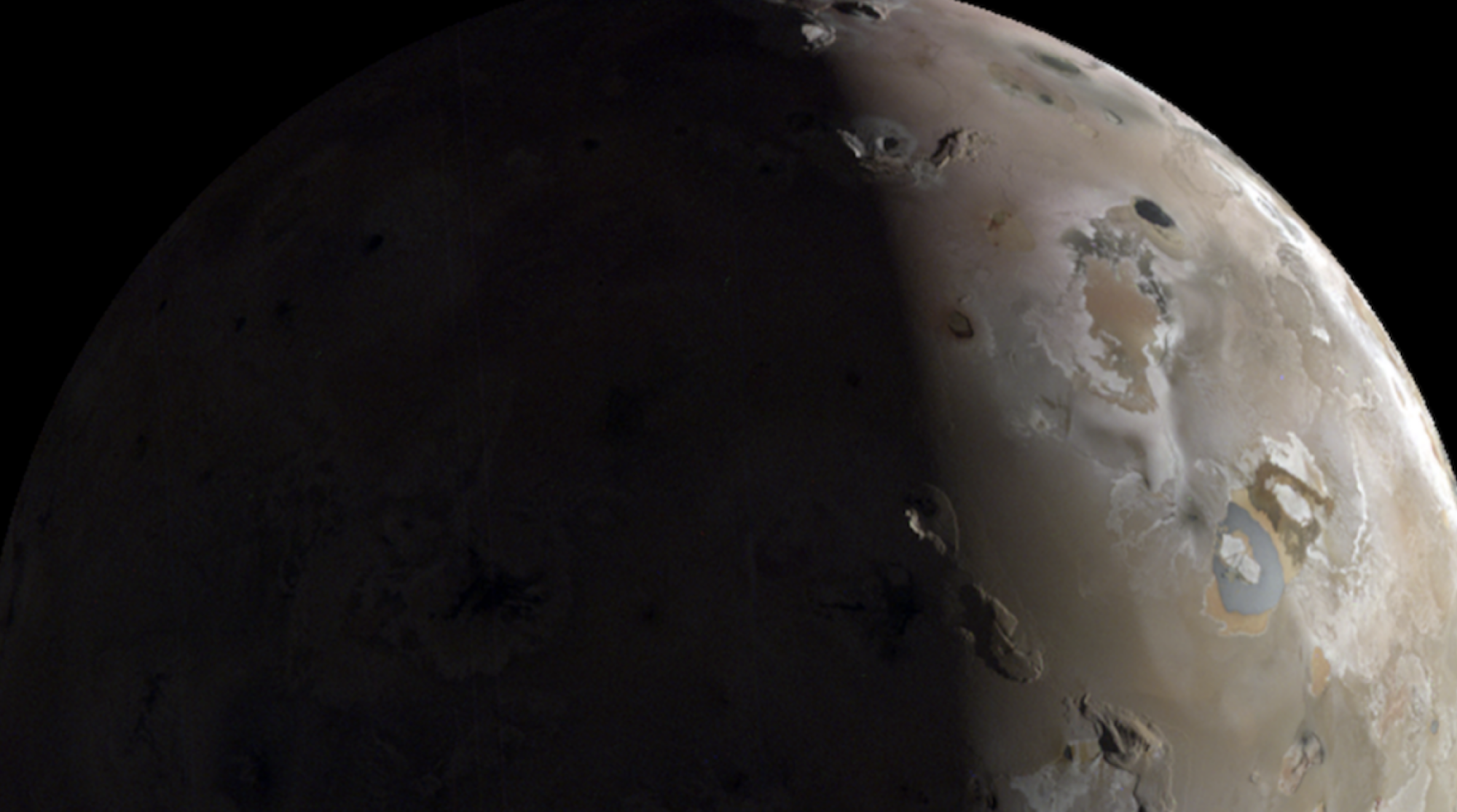
NASA’s Juno spacecraft captured this detailed view of Io on February 3, 2024.
Credits: NASA / JPL-Caltech / SwRI / MSSS / Jason Perry
After flying by Jupiter’s tortured moon on February 3, NASA’s Juno spacecraft has transmitted some of the closest images ever taken of the unique world. The agency’s spacecraft came within just 1,500 kilometers of Io, following a similar pass in December. Planetary scientists hope the highly anticipated flybys will answer fundamental questions about the mysterious, lava-spewing moon.
“The twin flybys are designed to provide new insights into the operation of Io’s volcanic engine and the existence of a global magma ocean beneath the rocky, mountainous terrain of Io’s surface,” mission operators wrote after the first images were returned.
Io contains hundreds of volcanoes, many of which are active and hot enough for Juno to detect their heat on the moon’s surface.
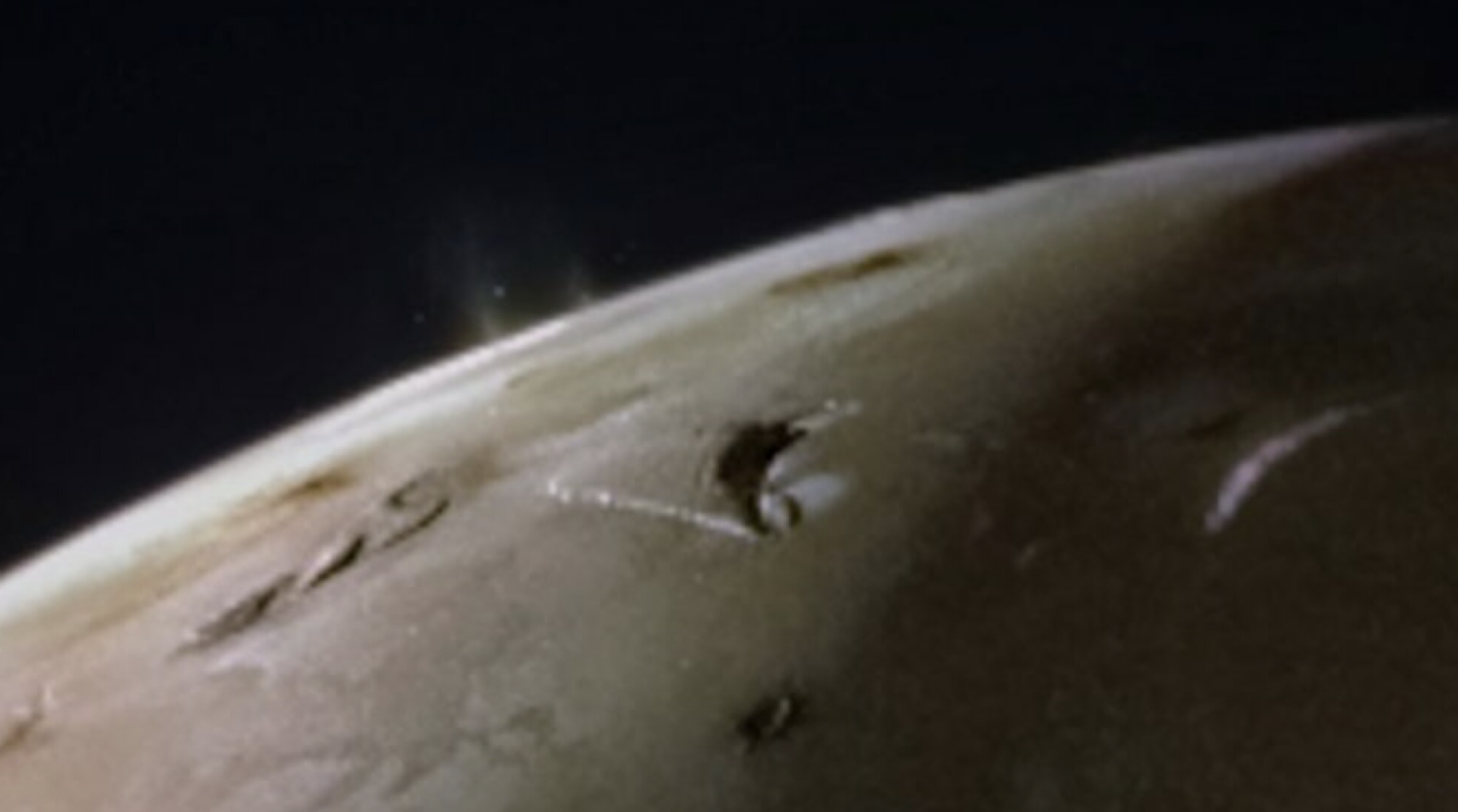
Two volcanic plumes rising from Io.
Credits: NASA / JPL-Caltech / SwRI / MSSS / AndreaLuck / CC BY 3.0 not transposed
Unpublished photo of the largest volcano in our solar system
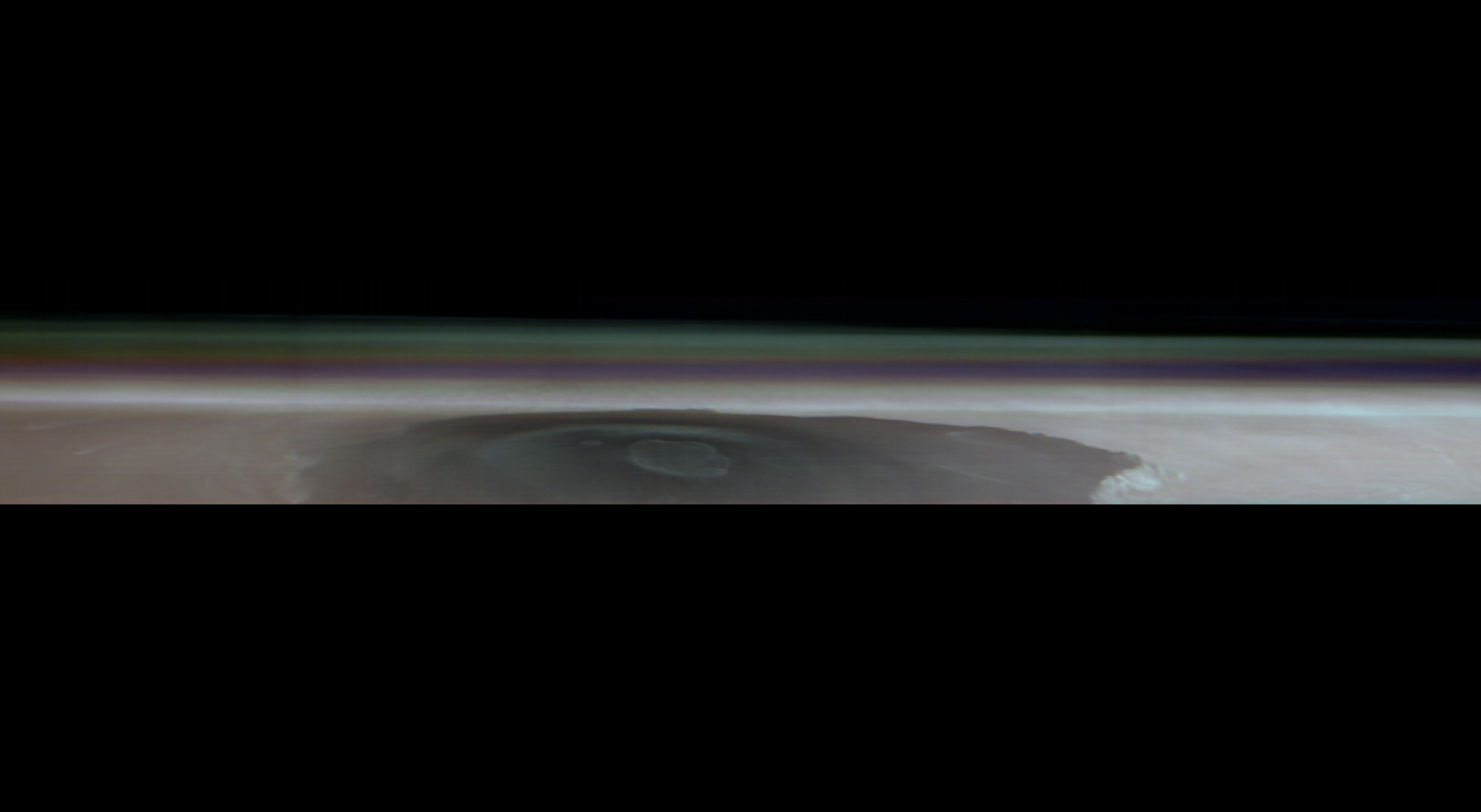
Olympus Mons captured by NASA’s Mars Odyssey 2001 orbiter on March 11, 2024.
Credits: NASA / JPL-Caltech / ASU
NASA has captured a panoramic view of the largest volcano known to mankind.
The space agency used its 23-year-old Mars Odyssey orbiter to capture a never-before-seen view of Olympus Mons, a view similar to what astronauts on a hypothetical orbiting space station might see of the gigantic mountain. It measures 370 miles (600 kilometers) wide (about the size of Arizona) and 17 miles (27 kilometers) high. That’s more than twice the height at which commercial airliners fly.
“Normally we see Olympus Mons in narrow bands from the sky, but by turning the spacecraft toward the horizon, we can see in a single image how much it dominates the landscape,” NASA Odyssey project scientist Jeffrey Plaut said in a statement. “Not only is the image spectacular, it also provides us with unique scientific data.”
As you can see, this is not a sharp-edged mountain, but a gradually sloping “shield volcano,” similar to Hawaiian volcanoes. It was formed by progressive lava flows, with thick, oozing lava layered on top of previous lava flows.
The tweet may have been deleted
A spacecraft approaches a metal object orbiting Earth and takes pictures
In April, a spacecraft cautiously approached and photographed a large chunk of metal orbiting Earth — a major step in combating humanity’s growing space junk problem.
The delicate space mission, undertaken by Japanese satellite technology company Astroscale, used its ADRAS-J satellite to hover within a few hundred meters of an abandoned, non-communicating section of a rocket, proving it could observe safely at such close proximity.
The tweet may have been deleted
The mission is part of the Japan Aerospace Exploration Agency’s (JAXA, NASA’s counterpart in Japan) “Commercial Debris Removal Demonstration” project, which seeks to find a proven way to remove problematic space debris from Earth’s orbit. A collision involving a large object can create thousands of additional debris, fueling a domino effect of future impacts.
Speed of Light Mashable
US spacecraft captures images of northern lights circling Earth
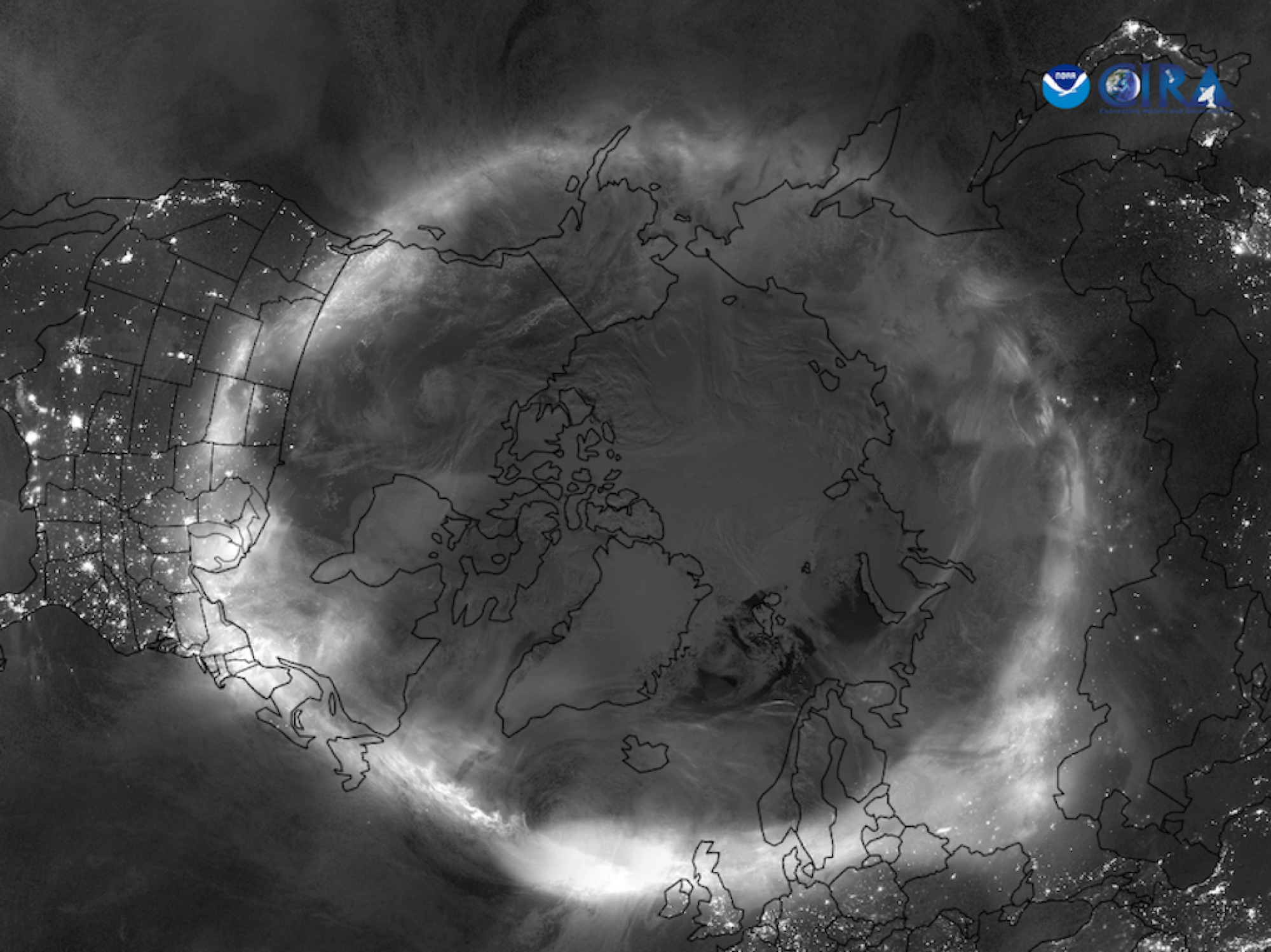
A view from above of Earth showing the vibrant northern lights on May 11, 2024.
Credit: NOAA
A series of intense solar storms hit Earth in May 2024, the strongest since Halloween more than 20 years ago.
While these explosions from the active Sun can pose a serious threat to our power grid and communications systems, they also cause spectacular events in our polar skies, commonly known as the aurora borealis. In particular, our mid-sized star has recently emitted a number of coronal mass ejections, or CMEs, which are ejections of extremely hot gas (plasma). “It’s like picking up a piece of the Sun and ejecting it into space,” Mark Miesch, a scientist at the National Oceanic and Atmospheric Administration’s Space Weather Prediction Center, told Mashable.
As they collide with Earth, solar particles can get trapped by our planet’s magnetic field, move toward the poles, and collide with molecules and particles in our atmosphere. These atmospheric particles then heat up and glow. Three U.S. weather satellites captured this spectacular event from the North Pole on May 11, showing a bright ring around places that don’t usually witness these dancing lights.
“Multiple coronal mass ejections from the Sun triggered an extreme geomagnetic storm around Earth last week, creating stunning aurora borealis displays even in places where the northern lights are rarely seen,” NOAA’s National Environmental Satellite, Data, and Information Service (NESDIS) explained when it released the image above. “The Southern Hemisphere also reported remarkable aurora borealis displays from the storm.”
Lunar spacecraft lands on head
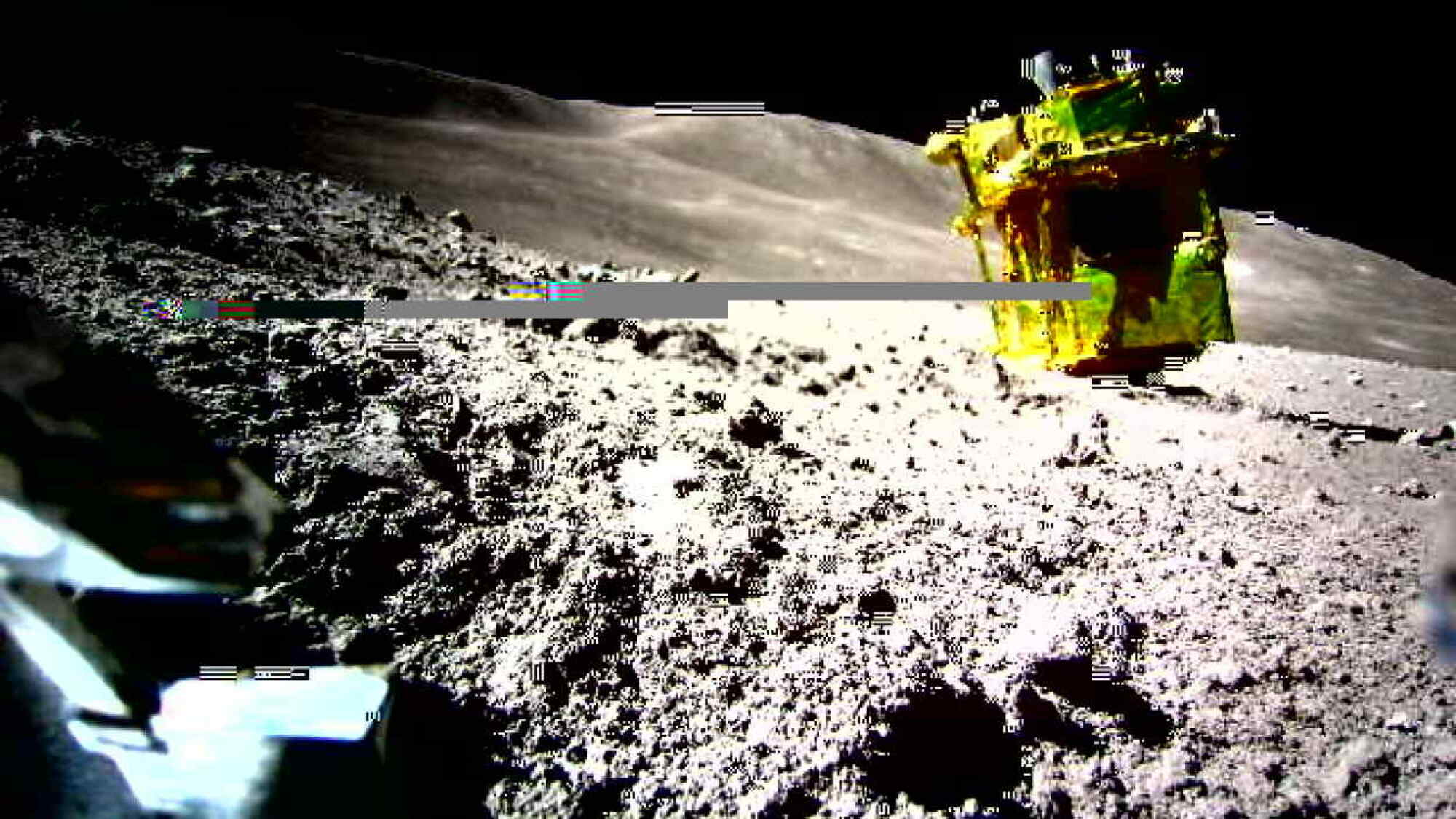
Japan’s SLIM robotic spacecraft landed upside down on the moon in January 2024.
Credit: JAXA
Japan landed its SLIM (Smart Lander for Investigating the Moon) spacecraft on January 19. About a week later, the Japanese space agency (JAXA) released an image of the robotic lander (taken by a baseball-sized robot released before landing), revealing why its solar panels failed to generate electricity.
He landed upside down.
One of SLIM’s thrusters malfunctioned 50 meters above the lunar surface, causing the accident. Despite this, the spacecraft still demonstrated an unprecedented “precision landing,” touching down within 100 meters of its intended target.
“The precise landing performance was evaluated at about 10 m or less, perhaps around 3 to 4 m,” JAXA said in a statement.
NASA Rover Finds Damaged Helicopter in Martian Desert
After a rough landing this year, the damaged Ingenuity helicopter is no longer able to fly. NASA’s Perseverance rover, which was nearby, spotted the alien helicopter on the ground, sitting alone in a valley on Mars in early February 2024.
The NASA image below, processed and enhanced by geovisual designer Simeon Schmauß, highlights the desolation of a deeply arid Mars, a desert planet that has largely lost its insulating atmosphere and is 1,000 times drier than the driest desert on Earth.
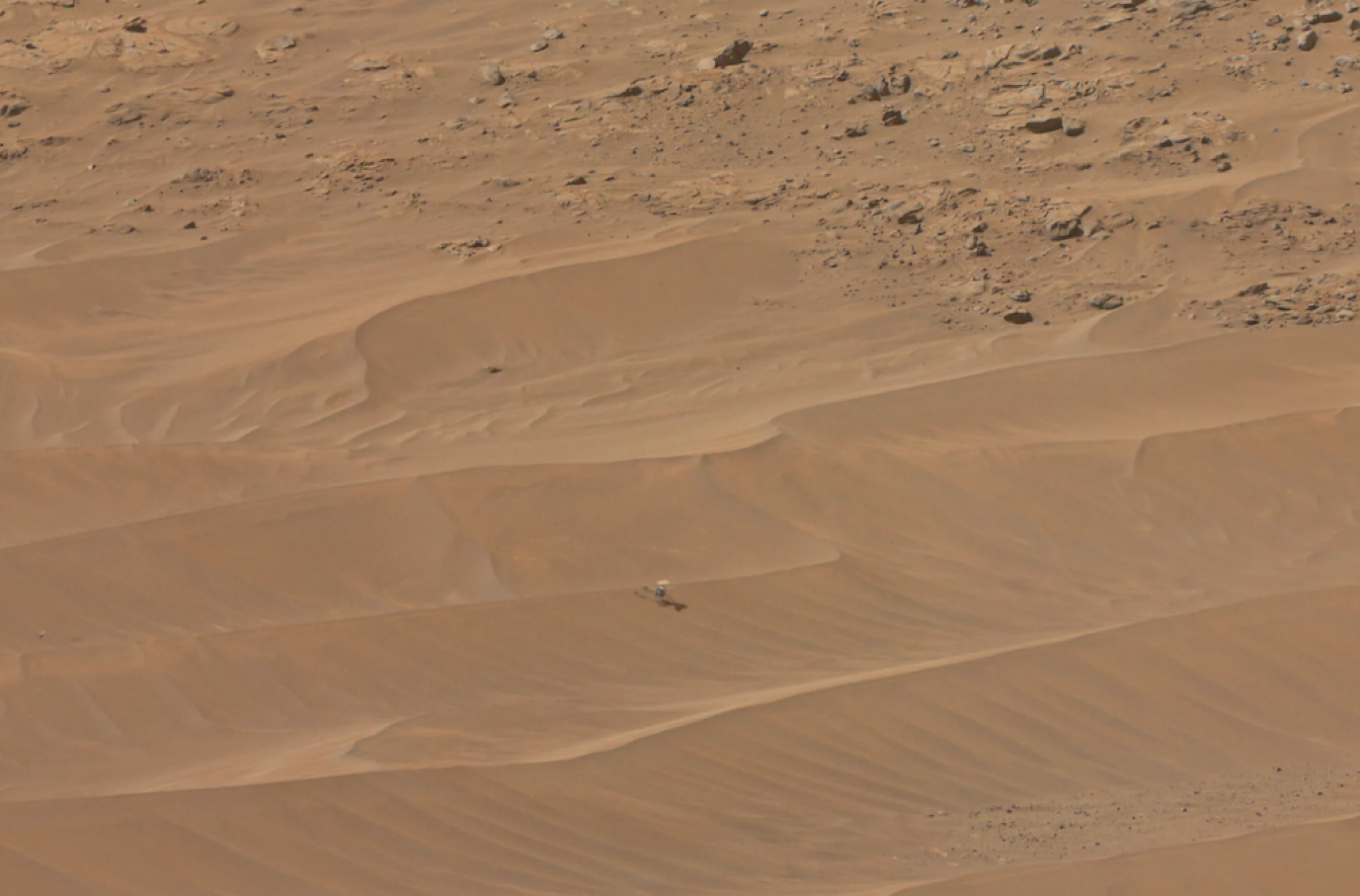
The Ingenuity helicopter is visible just below the center of this image.
Credits: NASA / JPL-Caltech / ASU / Simeon Schmauß
The Perseverance rover and its former aerial reconnaissance vehicle, Ingenuity, have been searching for the best places to look for signs of past Martian life, if there ever was any. Now the car-sized rover will hunt alone.
Before its accident, the Ingenuity spacecraft made history. This experimental robot was the first to make a powered, controlled flight on another planet. And it kept flying. Ingenuity flew on Mars no less than 72 times – engineers initially hoped it would fly five times, if ever. It traveled distances of up to 700 meters.
And it overcame a major challenge: The Martian atmosphere is quite thin, with a volume about 1% of Earth’s. That makes it difficult to generate the lift needed for flight. To take off, Ingenuity spun its 4-foot rotor blades at a dizzying 2,400 revolutions per minute.
A brutal US robotic landing on the Moon
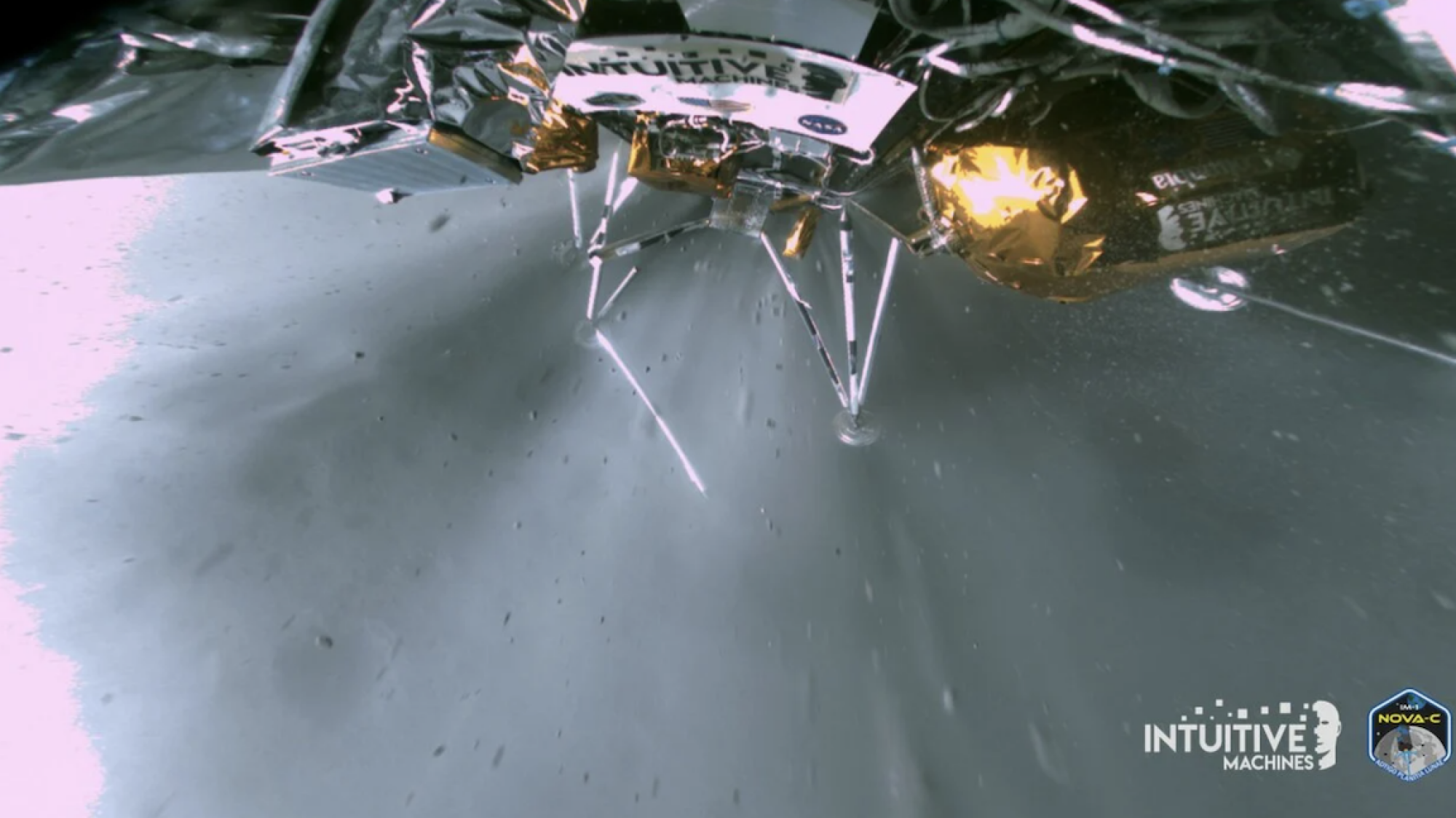
The robotic spacecraft Odysseus lands on the Moon on February 22, 2024.
Credit: Intuitive Machines
Intuitive Machines’ Odysseus lunar lander broke a leg while landing on the moon in February 2024. An onboard camera captured the dusty landing.
Although Odysseus’ landing wasn’t perfect, NASA, which provided $118 million for the commercial mission, hailed the Feb. 22 landing as a success. Even in a compromised state, the lander transmitted scientific data from across NASA’s equipment, including research on space weather and interactions between the spacecraft’s plume and the moon’s chalky surface.
The mission is part of the space agency’s Commercial Lunar Payload Services (CLPS) program, which selects companies to deliver NASA’s missions to the moon. It frees the agency, already burdened by an ambitious timeline for returning astronauts to the moon under the Artemis program, from having to fully plan and fund missions that land a crewed spacecraft. Such a crewed mission won’t happen until 2026.
The shadow of the lunar eclipse crosses the Earth
On April 8, 2024, millions of people across North America witnessed a rare total solar eclipse: the Moon passes between the Sun and Earth, casting a shadow on our planet.
For those in the relatively narrow path of totality, it’s an experience that can’t be overstated. “On a scale of 1 to 10, a partial eclipse is a 7,” Terry Virts, a former NASA astronaut who experienced his first total eclipse (from Earth) in 2017, told Mashable. “And a total eclipse is a million-dollar eclipse.” (A partial eclipse occurs when only part of the sun is blocked by the moon—an interesting experience, but nothing like totality.)
This is what the poignant event looked like from space, captured by a US scientific satellite.
The tweet may have been deleted